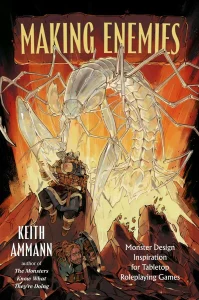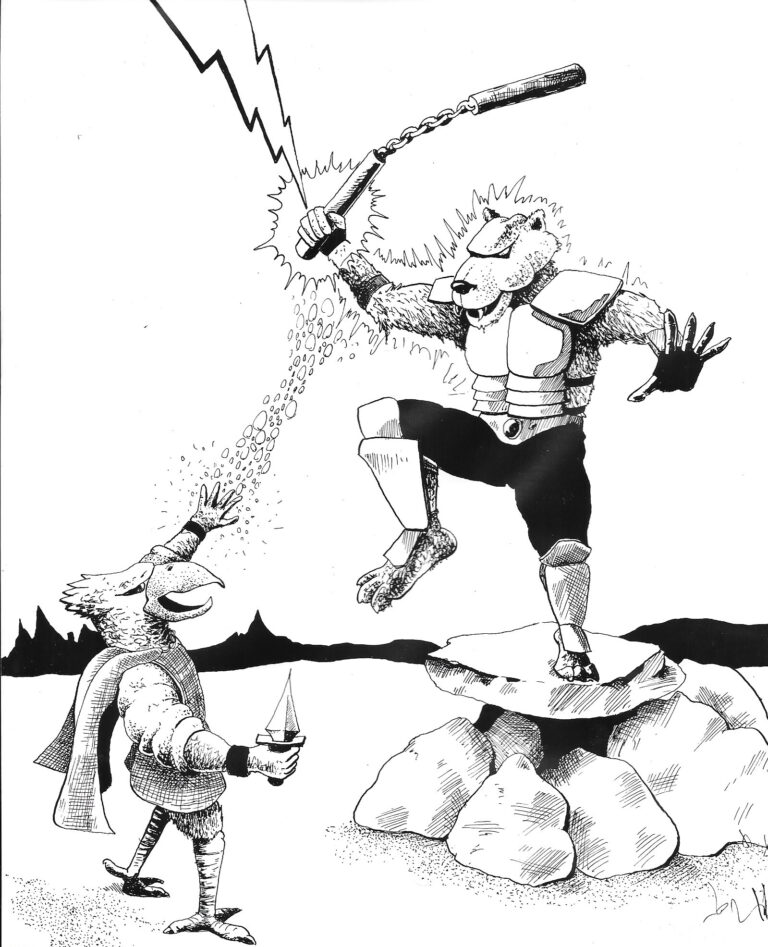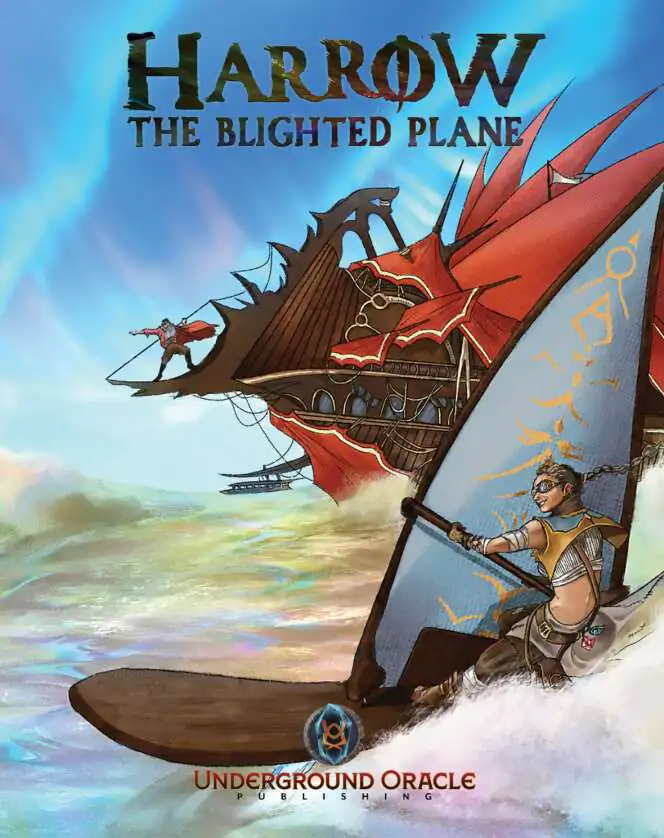By Jason Campbell
Note: A complimentary copy of Making Enemies was provided to Shadomain for review. Additionally I provided advice on creating monsters for the Cypher System and helped in playtesting the monsters in this book.
Today we’re looking at TTRPG author Keith Ammann’s book Making Enemies, a book of monster design inspiration for tabletop roleplaying games. Keith Ammann is the creator of the TTRPG blog The Monsters Know What They’re Doing, and the books based on it about deconstructing monster stat blocks to understand how they work and what their motivations and strategies should be. In his latest book, Making Enemies he discusses creating monsters with purpose for Dungeons & Dragons 5e (2014 and 2025), Pathfinder 2.0, Shadowdark, Cypher System and Call of Cthulhu. The book is available as a 572 page hardcover book from Gallery Books.

The Premise
The book begins by defining what ‘monster” means. As a fan of “monster” fiction and movies, I really appreciate this, and it is always beneficial to know the “why” and what’s behind a task before you attempt it.
Chapter Breakdown
The first chapter, Monster Parameters, discusses the different levels of challenge of monsters, then moves on to creature types and motivations. At the end of the chapter is a “Let’s Make a Monster” section, which proposes an idea for a monster, and then discusses how to build it in the five TTRPG systems mentioned.
The following chapters use the same format – each discussing an aspect of monster design (Monsters as Metaphors, Monsters and magic) and different monster sorts (Phased Monsters, Weird Nature), then discusses creating a fitting creature, such as Demerstrix and the Jabb-Vullith.
Subjects covered include how a creature’s environment affects their movement. The Weird Nature section makes use of the scientific categories of Kingdom, Phylum,Class, Order, etc.
Interviews
The author intersperses interviews throughout the book, including Mike Mason (creative director at Chaosium), James Mendez Hodes (cultural consultant and game designer), Mike McHargue (creative producer at Quantum Spin Studios), Banana Chan (game designer), Chris S. Sims (game designer), Willy Abeel (game designer) and Kelsey Dionne (game designer). These interviews are quite in depth, many more than a dozen pages, focusing on the interviewee’s specialty and experiences.
Countering Characters
There’s a discussion of how to effectively run monsters as a game master, including anticipating character’s attacks. I highly suggest reading this part very carefully, as Keith goes out of his way to emphasize that this should not be done to counteract all attacks of each character. Instead the section shows how a GM can design a monster so that a character who hasn’t been in the spotlight as much can shine, or feature a lesser used tactic or ability.
Conclusion
Making Enemies is a well researched and thought out work which is a great aid to game designers in creating monsters, and an asset to game masters looking for ways to effectively and thoughtfully run monsters. There’s a thorough Bibliography and the research and study that went into this work shows through.




